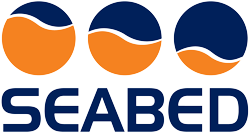 We offer calibrated pressure sensors in the following ranges, measured in dbar. NB: Dbar and metres are roughly similar. For an explanation of the relationship between calibrated pressure range and absolute accuracy, please see the article on this topic.
We offer calibrated pressure sensors in the following ranges, measured in dbar. NB: Dbar and metres are roughly similar. For an explanation of the relationship between calibrated pressure range and absolute accuracy, please see the article on this topic.

Our bathyMetrec•X includes a Paroscientific Digiquartz® sensor, with an accuracy of 0.01%FS. This is also available as an option for the Plus•X and the Metrec•X. Please contact our sales department for further information.
What is the Difference Between Precision and Accuracy?
Many vendors of oceanographic instrumentation refer to accuracy and precision interchangeably. They are not interchangeable. In effect, accuracy refers to how well a sensor performs against a known third party standard. For example, a temperature sensor may be +/- 0.001 C, as compared to a Black Stack themistor module. Precision refers to the repeatability of the readings of a given sensor. A sensor is precise when it repeatedly provides the same reading, regardless of how accurate that reading is.
A good analogy is a dart board. The thrower of darts is accurate when he or she is able to reach the target, the bulls-eye. He or she is precise if, having thrown three darts, all three land in the same location, irrespective of whether or not that location is the bulls-eye.
What is the Difference Between Calibration Range and Survival Depth?
The calibrated range of a pressure sensor is the normal operating range of the sensor where the pressure readings will fall within the sensor’s stated accuracy limits. AML Oceanographic allows users to select from amongst 12 different pressure ranges.
Pressure sensors can be over-ranged by 50% without causing damage to the sensor. In such a case, the sample points that lie beyond the calibrated pressure range of the instrument may not fall within the accuracy specifications of the instrument. However, the sensor will not suffer irreparable damage.
Burst pressure is that pressure at which irreparable damage is done to the sensor. In such a case, the instrument will flood and the sensor – and possibly the electronics – must be replaced. Burst pressure is normally 75% more than the stated pressure range on the sensor.
Download Brochure: Xchange Mar 2014 web
For more information please contact: sales@seabed.nl


Je moet ingelogd zijn om een reactie te plaatsen.